This article explains what to expect from laptops with Nvidia MX250 and MX230 graphics chips, how these GPUs compare to the popular MX150, as well as provides a complete list of portable devices bundled with these chips.
The Nvidia GeForce MX250 replaces the MX150 starting from the first half of 2019, and is still a discrete graphics chip based on the Nvidia Pascal architecture, while the GeForce MX230 replaces the entry-level MX130 chip and is a very similar chip, also based on the Pascal architecture, unlike the previous MX130 that was based on Maxwell and pretty much a rebadged 940MX.
Update: 2020 laptops now get an option for an MX350 dGPU, a more capable direct successor of the MX250. Follow this link for more details.
Both are entry-level dedicated GPUs designed as more capable alternatives to the Intel UHD graphics integrated within the Intel Core U processors.
As solutions for thin-and-light notebooks and ultrabooks, these are made with efficiency in mind and have low power requirements, which makes them suitable for compact builds. At the same time, they are also more affordable than the higher-tier Nvidia GPUs, so you’ll also find them in a handful of affordable full-size laptops.
Exact details are still scarce on the two, but we do know that they’re both based on Nvidia’s GP108 14-nm chip, so you can summarize them as slightly higher-clocked versions of the GeForce MX150 GPU. That means you should not expect the MX250 to run significantly faster than the MX150, while the MX230 should squeeze in somewhere between the two, but with a slightly higher TDP and cheaper price.
We’ll update with benchmark results and performance expectations once we get to review MX250/230 laptops, but for now, we’ll leave you with the specs sheets, then jump to the list of actual products built with these chips.
Update: We’ve covered the performance of the GeForce MX250 1D13 GPU in this separate article.
| Nvidia GF MX250 | Nvidia GF MX230 | Nvidia GF MX150 | |
| Architecture | Pascal | Pascal | Pascal |
| Codename | N17S-G2 (GP108 1D13) | N17S-G0 (GP108 1D11) | N17S-G1 (GP108 1D0/1D12) |
| Pipelines | 384 | 384 | 384 |
| Speed | 1518 – 1852 MHz | 1518 – 1531 MHz | 1468 – 1532 |
| Memory | up to 4 GB GDDR5 | up to 4 GB GDDR5 | up to 4 GB GDDR5 |
| Memory Speed | 7000 MHz | 7000 MHz | 6000 MHz |
| TDP | 10 – 25 W | 15 – 30 W | 10 – 25 W |
Based on these specs, I expect the MX250 and 230 to perform similarly to their predecessors, with the main difference between the generations being the slight increase in Clock and Memory Speeds, and the addition of support for Vulkan 1.1, OpenGL 4.6 and OpenCL 1.2.
On top of that, Nvidia will offer different versions of both these chips, just like with the MX150s: a lower power option for ultrabooks, with a TDP of 10-15 W, and higher power alternatives for full-size devices, with TDPs of around 25-30 W.
As far as gaming goes, expect to be able to run less-demanding titles and older games at FHD resolution and Medium/Low details, while for AAA titles you’ll pretty much have to go to HD resolution to get 30+ fps.
Down below we’ve compiled a list of laptops built on Nvidia MX250 and Mx130 laptops. Very few such devices have been announced at this point, but we’ll constantly update the tables and fill them up with the new launches as they come out.
Update: Many of the 2020 laptops in this segment now get an option for an MX350 dGPU, a more capable direct successor of the MX250. Follow this link for more details.
| Model | Format | Screen | CPU | GPU | Battery | Weight | Starting Price |
| Acer Aspire 5 A515-54G | Clamshell | 15.6″ FHD matte | Whiskey Lake Core U | MX250 25W (?) | 48 Wh | ~4 lbs / 1.8 kg | – |
| Acer Swift 3 SF314-56G | Clamshell | 14″ FHD matte | Whiskey Lake Core U | MX250 25W (?) | 48 Wh | ~3 lbs / 1.4 kg | – |
| Asus Vivobook S14 S432 | Clamshell | 14″ FHD matte | Whiskey Lake Core U | MX230 | 42 Wh | ~3.1 lbs / 1.4 kg | $799 |
| Asus Vivobook S15 S532 | Clamshell | 15.6″ FHD matte | Whiskey Lake Core U | MX250 | 42 Wh | ~3.7 lbs / 1.7 kg | $849 |
| Dell Inspiron 15 7000 | Clamshell | 15.6″ FHD matte | Whiskey Lake Core U | MX250 | 42 Wh | ~4.1 lbs / 1.86 kg | $799 |
| Dell Inspiron 15 7000 2-in-1 | Convertible | 15.6″ FHD touch | Whiskey Lake Core U | MX250 | 42 Wh | ~4.35 lbs / 1.97 kg | $1199 |
| Dell Inspiron 17 7000 2-in-1 | Convertible | 17.3″ FHD touch | Whiskey Lake Core U | MX250 | 56 Wh | ~6.1 lbs / 2.75 kg | $1099 |
| HP Envy 15m | Clamshell | 15.6″ FHD touch, OLED option | Whiskey Lake Core U | MX250 | 52 Wh | ~4.8 lbs / 2.1 kg | $899 |
| HP Envy 17m | Clamshell | 17.3″ FHD touch, OLED option | Whiskey Lake Core U | MX250 | 52 Wh | ~6.4 lbs / 2.9 kg | $899 |
| HP Pavilion x360 14 | Convertible | 14″ FHD touch | Whiskey Lake Core U | MX250 | 41 Wh | ~3.5 lbs / 1.55 kg | – |
| HP Pavilion x360 15 | Convertible | 15.6″ FHD touch | Whiskey Lake Core U | MX250 | 41 Wh | ~4.4 lbs / 2 kg | – |
| Huawei MateBook 14 | Clamshell | 14″ QHD glossy | Whiskey Lake Core U | MX250 25W | 57.4 Wh | ~3.3 lbs / 1.5 kg | $1199 |
| Huawei MateBook X Pro | Clamshell | 13.9″ touch | Whiskey Lake Core U | MX250 | 57.4 Wh | ~3 lbs / 1.4 kg | $1599 |
| Lenovo IdeaPad S340 14 | Clamshell | 14″ FHD matte 250-nits | Whiskey Lake Core U | MX250 | 48 Wh | ~3.5 lbs / 1.7 kg | – |
| Lenovo IdeaPad S340 15 | Clamshell | 15″ FHD matte 250-nits | Whiskey Lake Core U | MX250 | 48 Wh | ~4 lbs / 1.8 kg | – |
| Lenovo IdeaPad S530 14 | Clamshell | 14″ FHD glossy 300-nits | Whiskey Lake Core U | MX250 | 48 Wh | ~3.5 lbs / 1.7 kg | – |
| Lenovo IdeaPad S530 15 | Clamshell | 15″ FHD glossy 300-nits | Whiskey Lake Core U | MX250 | 48 Wh | ~4 lbs / 1.8 kg | – |
| Lenovo ThinkPad T490 | Clamshell | 14″ various options | Whiskey Lake Core U | MX250 | 50 Wh | ~3.45 lbs / 1.55 kg | $1149 |
| Lenovo ThinkPad T490s | Clamshell | 14″ various options | Whiskey Lake Core U | MX250 | 57 Wh | ~3 lbs / 1.3 kg | $1449 |
| Lenovo ThinkPad T590 | Clamshell | 15.6″ various options | Whiskey Lake Core U | MX250 | 57 Wh | ~3.9 lbs / 1.75 kg | $1199 |
| MSI PS42 | Clamshell | 14″ FHD matte 280-nits | Whiskey Lake Core U | MX250 25W (?) | 50 Wh | ~2.6 lbs / 1.2 kg | – |
| Xiaomi Mi Notebook Air 13.3 | Clamshell | 13.3″ FHD matte | Whiskey Lake Core U | MX250 | 39 Wh | ~2.9 lbs / 1.3 kg | – |
Here’s a short glossary of the terms mentioned above:
- Types:
- clamshell: traditional computer whose screen closes on top of the keyboard and does not flip into any sort of tablet mode;
- convertible: 2-in-1 laptop whose screen rotates or converts to a tablet mode (or similar), but cannot be detached from the base;
- Resolutions: HD ( 1366 x 768 px), WXGA+ (1440 x 900 px), HD+ (1600 x 900 px), FHD (1920 x 1080 px), WUXGA (1920 x 1200 px) FHD+ (2160 x 1440 px), retina (2304 x 1440 px), QHD (2560 x 1440 px), WQXGA(2560 x 1600 px), QHD+ (3200 x 1800 px), UHD (3840 x 2160 px) – also see this post.
That’s about it for now, but as I’ve mentioned in the beginning, this article is a work in progress and I’ll be adding new products as they are released, so bookmark this for updates if interested on the topic.
That aside, if these Nvidia GeForce MX250 and MX230 laptops don’t offer the performance you want, you should also check our lists of more powerful laptops with Nvidia GTX 1050/1050Ti , GTX 1060 graphics or the newer RTX 2060 options.

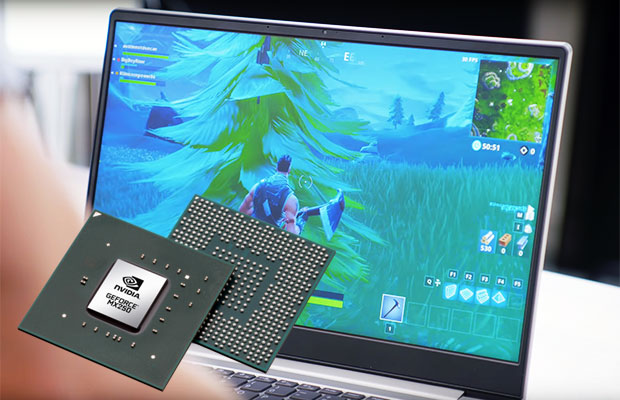


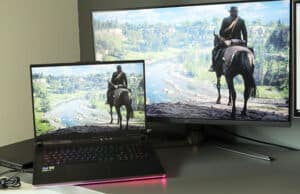

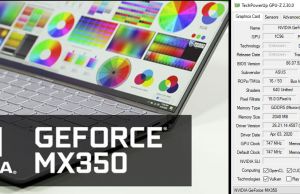
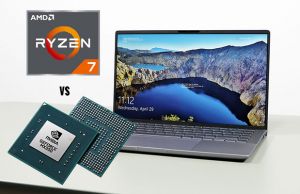
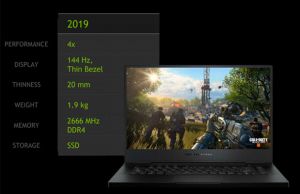




P. Lis
March 27, 2019 at 9:51 pm
Curious If Nvidia will ever migrate the lower end MX line to Turing from pascal in the future or will it be stuck on pascal for the next few gens/releases? I feel Nvidia does not seen the need to change it.
While intel's gen 11 graphics should bring a much needed boost to integrated graphics, the leaked 940 iris plus while a big improvement over 920, might still not be a match for the mx150, if we compare mx150 gfxbench and the leaked gen 11 numbers.
That being said, it is unknown which model was used in the gfxbench test. The recent leak from the intel graphics driver shows a couple of versions of the 940, one with 48 EU and one with 64 EU, so the numbers will change depending on the version. There will be a 920 as well with only 32 EU so unknown if this will be the standard integrated graphics for all U-series or intel will use a stepwise approach where the i3 have different IGT versus the i5, and i7 and perhaps even an i9 for mobile U series for the first time? Who knows, either we will find out at computex or later on before IFA but an i9 u series with iris graphics 950 sound tempting but might throttle significantly if not cooled adequately .
Neftaly Hernandez
May 21, 2019 at 3:45 am
It looks like Lenovo doesn't offer a MX250 option with the T490s, only on the T490 (upgraded CPU required).
FWIW the Mi Air 13.3 is available on their official TaoBao shop (2 of the 3 I7-8550U's have a MX250):
https://detail.tmall.com/item.htm?id=593328027117
Is it worth mentioning which laptops support 4k60+ (i.e. MiniDP/TB3/HDMI 2.0)? I personally drive a 4k external monitor and prefer a beefier GPU just for that, however a bunch of these like the MSI only support 4k30 over HDMI 1.4.
Jeremy Wong
August 10, 2019 at 2:00 am
Hi Andrei,
a big fan and a long time reader of your site. Here are more laptops with MX250 which I like to see added to the list for comparison.
ASUS Vivobook X412
ASUS Vivobook X512
Dell Inspiron 5480 14
HP ENVY 13
HP Pavilion 15
Xiaomi RedmiBook 14
HUAWEI HONOR MagicBook Pro 16
Aftershock Lunar 14 (The lightest one, 1.05kg)
Carlos
September 12, 2019 at 5:58 am
I wonder if the Dell vostro 14 5490 (i7 10510u 16gb 512GB SSD) comes with the Nvidia MX250 of 10W or 25W
OFG
October 27, 2019 at 10:39 pm
I really need to know this. Pls answer!